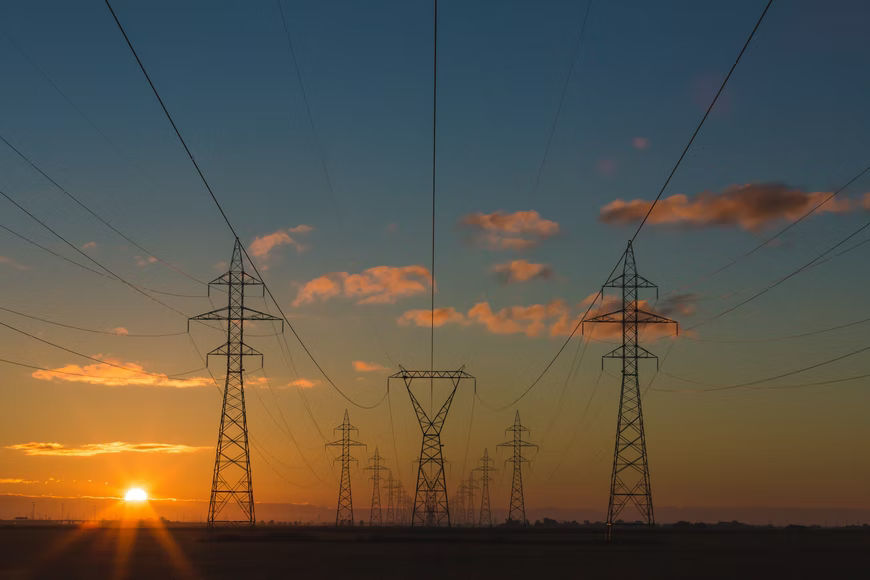Power providers are on high alert as the wildfire danger heightened in western Oregon is caused by strong winds and hot, dry weather.
In order to reduce the chance that their power lines would catch fire, Portland General Electric and Pacific Power turned off the energy for as many as 40,000 customers on Friday.
Also read: Judge restores oil lease on land sacred to Native American tribes in US, Canada
In addition to spending millions of dollars to keep branches away from power lines, PGE previously revealed plans for potential power shutoffs to ward off wildfires. After all, a single damaged branch may short out a power line, causing a disastrous fire with a spark that would fly into the air.
The utility implemented the plan on Friday by turning off the electricity for more than 30,000 customers, many of whom reside outside of the Portland metropolitan area. The Columbia River Gorge and rural regions of the Willamette Valley are some other areas that are impacted.
In Linn, Douglas, Lincoln, Tillamook, Marion, and Polk counties, more than 12,000 customers may experience power outages between Friday and Saturday, according to Pacific Power.
Also read: International Standards Organization clears new ways to track guns, ammo purchase: What it means
It’s the first time electricity has been cut off for such a large area in Oregon to aid in wildfire prevention. The deployment wasn’t flawless, as you might anticipate.
Despite being outside of the designated locations for a power shutoff, some customers received alerts that their electricity would be disconnected.
Northwest Newberg homeowner Liz Malliris claimed that she received three alerts on Thursday and that she had to contact customer support to ascertain that she was not in the affected area.
“I was reasonably assured I wasn’t going to have a power outage. But just in case, I watered everything because as with most rural people that are in these areas, I’m on a well. I have a well pump. It’s run by electricity. And if you have farm animals, you have pets — never mind the AC issue — water is kind of what its about,” Malliris said. “I do have a generator, as many people do, but again, that’s a whole other thing getting that started up. So it’s no small thing to have a power outage. It’s not like you just say, OK, I’ll go to a hotel. So you don’t want to alarm people unnecessarily.”
Also read: New York declares ‘state of emergency’ amid polio detection: Everything to know
She described how the PGE’s planned power outage maps gave her frightening flashbacks of the Labor Day flames that erupted two years prior and how she found them confused and alarming.
“Admittedly I have a little bit of PTSD from September 2020 because I was one road away from evacuation from the Chehalem Mountain fire, and that was terrifying. Much more terrifying for the people who did have to evacuate, but for those of us who were on the cusp — I mean you go from room to room and figure out, what can I get in my car? What do I need to take? And what am I willing to completely lose? So that heightened sensitivity makes me both appreciate and be somewhat scathing of this effort,” Malliris added.
How did Oregon end up with intentional power outages, then?
The state legislature mandated that power providers identify high-risk fire zones in 2021 and develop plans to stop their power lines from starting fires.
Prior to the passage of that legislation, PGE only had one high-risk fire zone in the state, which ran from the town of Sandy east to Mount Hood. Early in September 2020, PGE cut electricity to that region during a strong windstorm, but no flames broke out there.
But farther south, the same windstorm sparked the enormous Beachie Creek Fire, which scorched thousands of acres of land and killed five people while destroying hundreds of buildings.
Because there was no planned outage, some of Pacific Power’s power lines, according to a class-action lawsuit, contributed to the fire.
PGE added nine more high-risk fire zones after the legislature took action last year. These areas include portions of the Columbia Gorge, Estacada, Oregon City, Scotts Mills, the Tualatin Mountains, and Portland’s West Hills.
Also read: How is the polio virus transmitted?
13 high-risk zones, encompassing urban and rural areas of Hood River and Medford, were recognised by Pacific Power, which had previously not declared any such areas.
Millions of dollars are being spent to keep tree branches away from power lines, according to Bill Messner, PGE’s director of wildfire mitigation and resiliency, and work is being done to protect older wires that are more likely to catch fire. But the process takes time.
“There is bare conductor and there is covered wire we call ‘tree wire,’ and that is an insulation around the wire,” Messner said.
According to him, the older power lines don’t have any protective covering, thus it is the idea to add it in risky places.
In order to receive regular information on conditions in each place, PGE operates remote weather stations in each high-risk fire zone. From a brand-new multimillion-dollar facility in the Portland region, the business has meteorologists and fire specialists monitoring those circumstances. With the stroke of a button, operators can cut off power from that facility to certain places.
Power restoration will start on Sunday morning and could be completed for everyone by Monday night, according to PGE, supposing their systems are not harmed by the wind this weekend.







